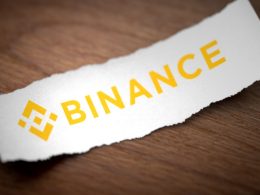You may ask yourself, “Which Blockchain Networks Are Right for Your Business?” In this article, you’ll learn about Bitcoin, Ethereum, Ripple’s XRP Ledger, and Uniswap, a cross-chain token exchange. These platforms are gaining popularity, and a growing number of people are getting involved. But which ones are right for you? (Also Read: Proven Ways to Buy Cryptocurrency Using a Credit Card)
Bitcoin and Ethereum
Today, more than a thousand different digital currencies make use of blockchain technology, which is a proven technology for building new software. Bitcoin, the most popular crypto, is one example of a blockchain. Ethereum is one, and both are programmable networks. These networks enable businesses to avoid using third parties to conduct transactions. Ultimately, they could improve payments around the world.

The technology enables these transactions to be fast and transparent without a central authority. In addition, these transactions are inherently secure and are interconnected to each other. The blockchain is a decentralized network of computers, or network nodes, that store and validate information. As a result, it is incorruptible and safe, unlike traditional logbook methods. It removes the need for intermediaries in many transactions and operations, such as real estate. It also allows for faster transactions than traditional financial institutions.
Although Ethereum and Bitcoin are the most popular blockchain networks, other technologies are gaining traction as well. The Ethereum network, for example, allows developers to build and deploy decentralized applications and smart contracts. It also has its own programming language. Its digital currency, called Ether, is used for four main purposes: it can be used to purchase goods and services; traded as a digital currency on exchanges; and used as a payment method for transactions on the Ethereum network.
Ripple’s XRP Ledger
XRP is a cryptocurrency that is used on the Ripple Network to send and receive payments. The Ripple network has a total supply of 100 billion XRP tokens. Ripple can issue new coins as needed, but the circulating supply diminishes over time. XRP is widely traded, forming trading pairs with many other cryptocurrencies and fiat currencies.
Ripple aims to serve as a trusted agent in the transactions it facilitates, ensuring that the transactions go through and that the exchange is successful. Ripple’s network has developed a platform that allows exchanges between cryptocurrencies and fiat currencies. Each transaction on the platform costs a small amount of the company’s native currency, XRP, and can be done on-chain or off-chain.
Its speed of transactions makes it an ideal infrastructure for international payments. While conventional cross-border transactions can take days and incur steep fines, XRP’s network can process payments in a fraction of the time. This makes XRP a valuable asset for banks and other financial institutions that need to transfer money between currencies.
XRP belongs to the XRP Ledger protocol, which was launched by Ripple in 2012. The XRP Ledger protocol is a permissionless distributed ledger that is designed to settle transactions in as little as three to five seconds.
Uniswap cross-chain token exchange
Uniswap is a decentralized exchange and is built on the Ethereum blockchain. It allows users to exchange Ethereum-based crypto assets, including ERC-20 tokens and personal identities. This allows for instantaneous liquidity and eliminates the need for centralized exchanges and order books. It also has automated market-making and rebalancing mechanisms.
This system is based on the Constant Market Maker algorithm, which ensures that liquidity levels remain consistent. Each liquidity provider creates markets for a pair of assets and deposits an equal amount of both assets into the liquidity pool. The price of each asset depends on the relative supply and demand of the assets in the liquidity pool. For example, a user can buy ETH from a DAI/ETH pool to increase their supply of DAI.
Uniswap has been in operation for almost two years. However, the exchange has faced several security issues, including a flash loan attack that led to the theft of $ 350K in ether. As a result, Uniswap launched Uniswap V2, which aims to enhance security. However, users still face problems with token listings. This is because anyone can create a fake cryptocurrency with similar names and logos.
Bloq
Bloq is a blockchain infrastructure provider, which makes it easy to develop cross-blockchain applications. With its APIs, developers can easily connect with popular blockchain networks and access indexed data. They can also create private clusters of nodes to ensure their business runs on a solid, fault-tolerant data foundation. Moreover, Bloq provides the infrastructure necessary for blockchain applications of all scales. This can help traditional and blockchain-native businesses develop and scale their businesses. It also helps blockchain ecosystems develop applications and explore synergies with leading blockchain protocols.
Developed in 2014, Tezos is an open source public blockchain network that supports smart contracts, novel financial instruments, and decentralized applications. It is similar to Ethereum in that it allows users to create and manage accounts and transactions. It has been used by financial institutions and other companies as a way to store and manage money.
Avalanche
Avalanche is a blockchain network and cryptocurrency with a proprietary VM that allows it to reach consensus with conventional blockchain systems and different database structures, including Directed Acyclic Graphs (DAGs). Avalanche projects are also very flexible and interoperable, which means that they can be used with many different platforms.
Avalanche was developed by Cornell University professor and world-renowned computer scientist, Emin Gun Sirer, and was launched in September 2020. Founder Emin Gun Sirer has been in the distributed ledger technology industry since it was first developed. Avalanche is designed to be scalable and has sub-second transaction speeds.
The Avalanche network uses a subsampled voting system to ensure the validity of incoming transactions. It requires users to stake AVAX coins to become validators. Validators earn a percentage of the rewards for validating transactions. This process is repeated until enough confidence is reached by the validators.
Avalanche’s platform is divided into multiple subnets that each have their own unique properties. The Platform Chain coordinates validators across the network and manages staked funds. Another network is the Contract Chain, which enables developers to build decentralized applications. The platform also supports Ethereum Virtual Machine (EVM) apps, making it easy to move Ethereum-based applications to the Avalanche platform quickly.
Parachains
Parachains are blockchain networks that run transactions on an additional layer concurrently with the network. These networks are designed to allow the blockchain network to scale easily. To become a parachain, a project needs to bid for a slot at an auction. This can take anywhere from six months to two years.
Parachains have several advantages over conventional blockchains. For one thing, they don’t need to bootstrap a network of validators and miners. Another advantage is that they can use blockchain frameworks that simplify development and accelerate maintenance. For example, while conventional blockchains have fixed fees based on short-term network usage, parachains have the ability to customize transaction fees. Furthermore, they can process transactions side-by-side and in parallel, which enhances throughput.
Open chains are also available to users, allowing them to design their own chains. For instance, a pay-as-you-go or pop-up store can be built on a Parachain, while a blockchain for secure transactions can be built on top of an existing one. Furthermore, they address the issues of speed, security, and decentralization. However, if you want to create your own private blockchain, you’ll have to compete with other blockchain networks for a slot. (Also Read: Learn How to Sell Cryptocurrency Quickly )












